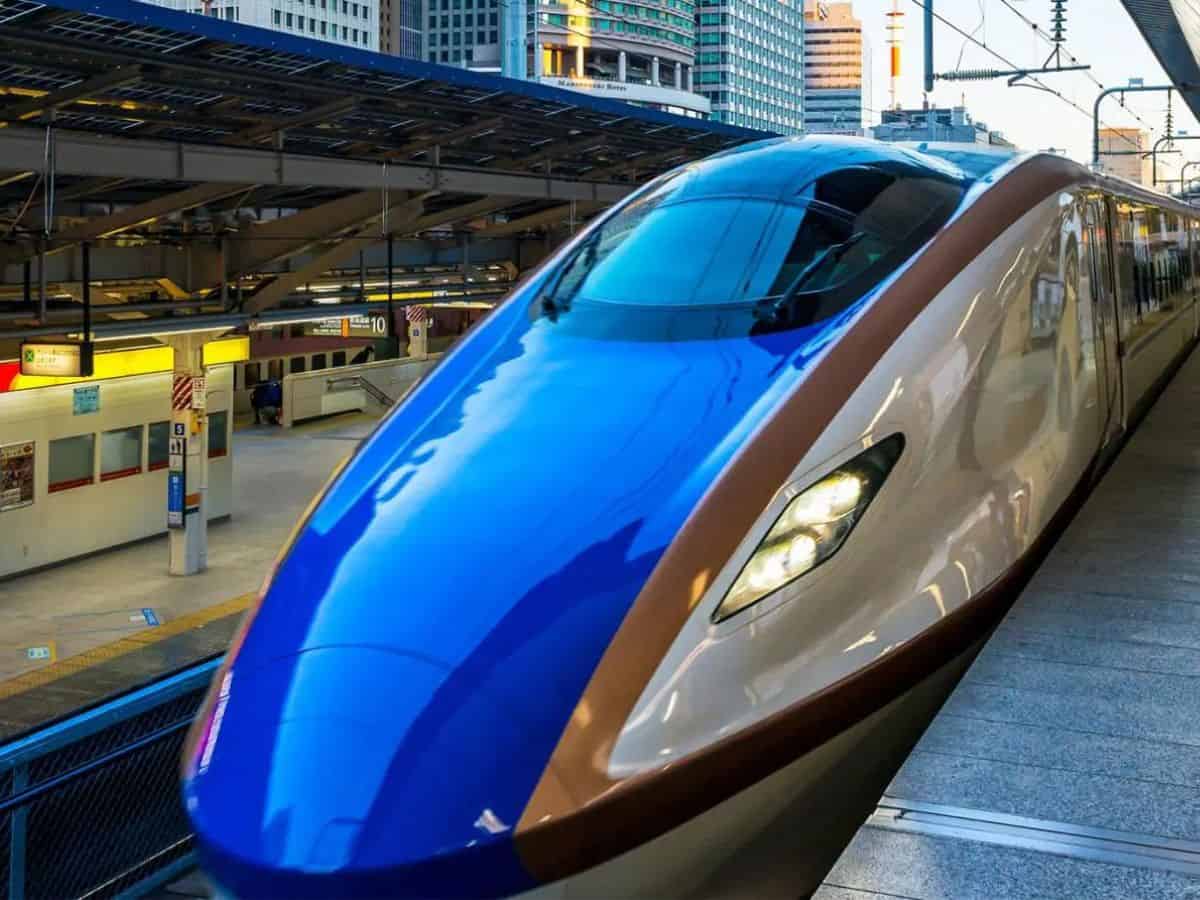
Mumbai: The country’s first bullet train project would have seen much progress by now had the then Uddhav Thackeray government in Maharashtra expedited permissions, said Railway Minister Ashwini Vaishnaw on Friday, asserting that the high-speed line will usher in economic growth.
Speaking to media persons while inspecting the work on the project here, Vaishnaw announced that the Surat-Bilimora section on the 508-km-long corridor between Mumbai and Ahmedabad could be operational by July-August 2026.
The other sections will be opened one after the other thereafter, he said.
The bullet train corridor will have limited stop’ and all stop’ services. While the limited-stop trains will cover the distance between Mumbai and Ahmedabad in just two hours, the other service will take about 2 hours 45 minutes, the minister said.
A total of 12 stations have been planned for the project, which is being implemented by the National High Speed Rail Corporation Limited (NHSRCL).
“Had the (then) Uddhav Thackeray government given all the permissions faster, this project might have progressed much ahead by now,” Vaishnav said.
He said as soon as the Eknath Shinde-Devendra Fadnavis (Shiv Sena-BJP) government came to power in the state, permissions were given in 10 days.
The Maha Vikas Aghadi government under Thackeray fell in 2022 after Shinde split the Shiv Sena with his rebellion. Shinde then aligned with the BJP to form the government and became the chief minister, with Fadnavis taking the deputy CM’s post.
The railway minister said that the 284-km-long bullet train corridor viaduct is ready in Gujarat, where work has progressed speedily. It is now happening at the same speed in Maharashtra as well, he said.
The Thackeray government, unfortunately, delayed the project much but they will try to “make up for it now”, he said.
High-speed rail projects should be seen from an economical standpoint and not as transport initiatives.
With high-speed connectivity, areas like Mumbai, Thane, Vapi, Surat, Vadodara, Anand and Ahmedabad will turn into a single economic zone and it will give them a “big economic boost”, the railway minister asserted.
To speed up tunnel construction, Vaishnaw said, innovations have been made and work was started from four points at a time. Of the four points two are shafts, one ADIT (additionally driven intermediate tunnel) and one final point at BKC (Bandra-Kurla Complex) station.
He said that there are complexities and difficulties tied to the corridor as trains will run at 320 kmph on it. “But our biggest aim in this project is to understand this complete technology,” he said.
The bullet train corridor has a 21-km-long tunnel, including a 7-km undersea stretch, he said, calling the work challenging.
The deepest point of the tunnel is 56 metres and it will also be very wide with a width of 40 feet. Inside the tunnel too, the trains will run at the speed of 300-320 kmph, Vaishnaw said.
“We have many cities having a population of over 1 crore. To give them low-cost and less time (consuming) transport systems, our country needs to achieve mahrath’ (expertise) in such technology,” he said.
According to NHSRCL, the 21-km shaft, which will have India’s first undersea tunnel, is coming up between BKC in Mumbai and Shilphata in neighbouring Thane district. It will be a single tube tunnel having Up and Down tracks.
Work on the tunnel is underway at BKC, Vikhroli and Ghansoli. NHSRCL said they are facing multiple challenges at these shaft construction sites, which have high population density and several utilities like pipelines, electrical installation and infrastructure projects, including the Metro and highways.
“Three Tunnel Boring Machines will be used to make about 16 km of the tunnel portion and the remaining 5 km will be through New Austrian Tunnelling Method (NATM),” NHSRCL said.
The cost of the project is pegged at Rs 1.08 lakh crore and as per its shareholding pattern, the Government of India is to pay Rs 10,000 crore to the NHSRCL, while the two states involved, Gujarat and Maharashtra, are to pay Rs 5,000 crore each.
The rest is to be funded by Japan through a loan carrying 0.1 per cent interest.
